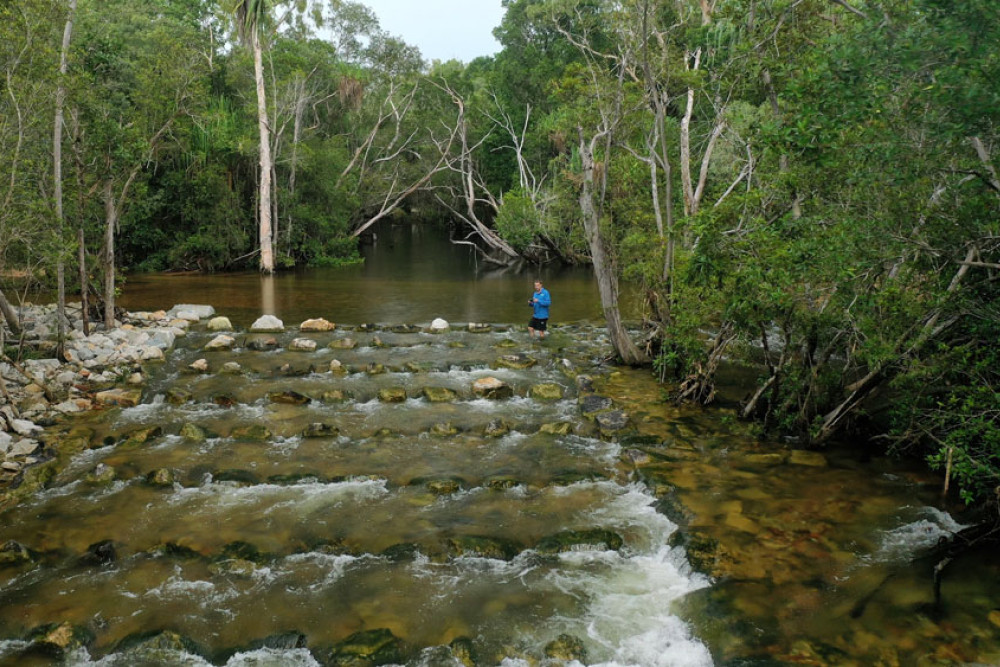General News
12 November, 2024
Something fishy going on in these FNQ creeks
NEW fishways are helping fish species, including barramundi and mangrove jack, to breed up in North Queensland waterways.

Six fishways built between Tully and Crystal Creek near Paluma over the last year have removed barriers for juvenile fish. Together, they’ve opened up more than 100km of creek and river systems – and recent surveys at these sites have shown they are fish highways.
More than 1000 fish were recorded moving through one of the fishways – at Insulator Creek north of Townsville – in one day. In more recent surveys, over 4500 fish were caught and released during monitoring work at four rock ramp fishways.
“Sixteen native species, including juvenile barramundi, empire gudgeon, rainbow fish, tarpon and long-finned eels, were recorded,’’ Terrain NRM’s Deb Bass said.
“Of the 80+ species of native fish we have in the Wet Tropics region, up to half need to move between salt and freshwater habitats to complete their lifecycles. Barriers like weirs, pipes, culvert crossings and weed chokes can stop these species from thriving,” she said.
“In recent surveys at our fishways, eight of the 16 native species recorded are species that need that movement - from their beginnings in saltwater to safer freshwater nursery grounds as juveniles and then back downstream to the saltwater to breed as adults. So we can see the fishways are providing access for these species, from barramundi and mangrove jack to shrimps.”
Terrain NRM has been working with OzFish Unlimited, Catchment Solutions and Australasian Fish Passage Services on the ‘Fish Homes and Highways’ project, funded by the Australian Government’s Reef Trust. Fishways are a relatively new solution in the region – a series of underwater stairs for fish, with deep pools between each one for resting.
Catchment Solutions fishery ecologist Matt Moore said rocks were placed strategically, sometimes in S-bend and sometimes a straight line, to achieve the right gradient to create a slower flow while also being able to withstand floods.


